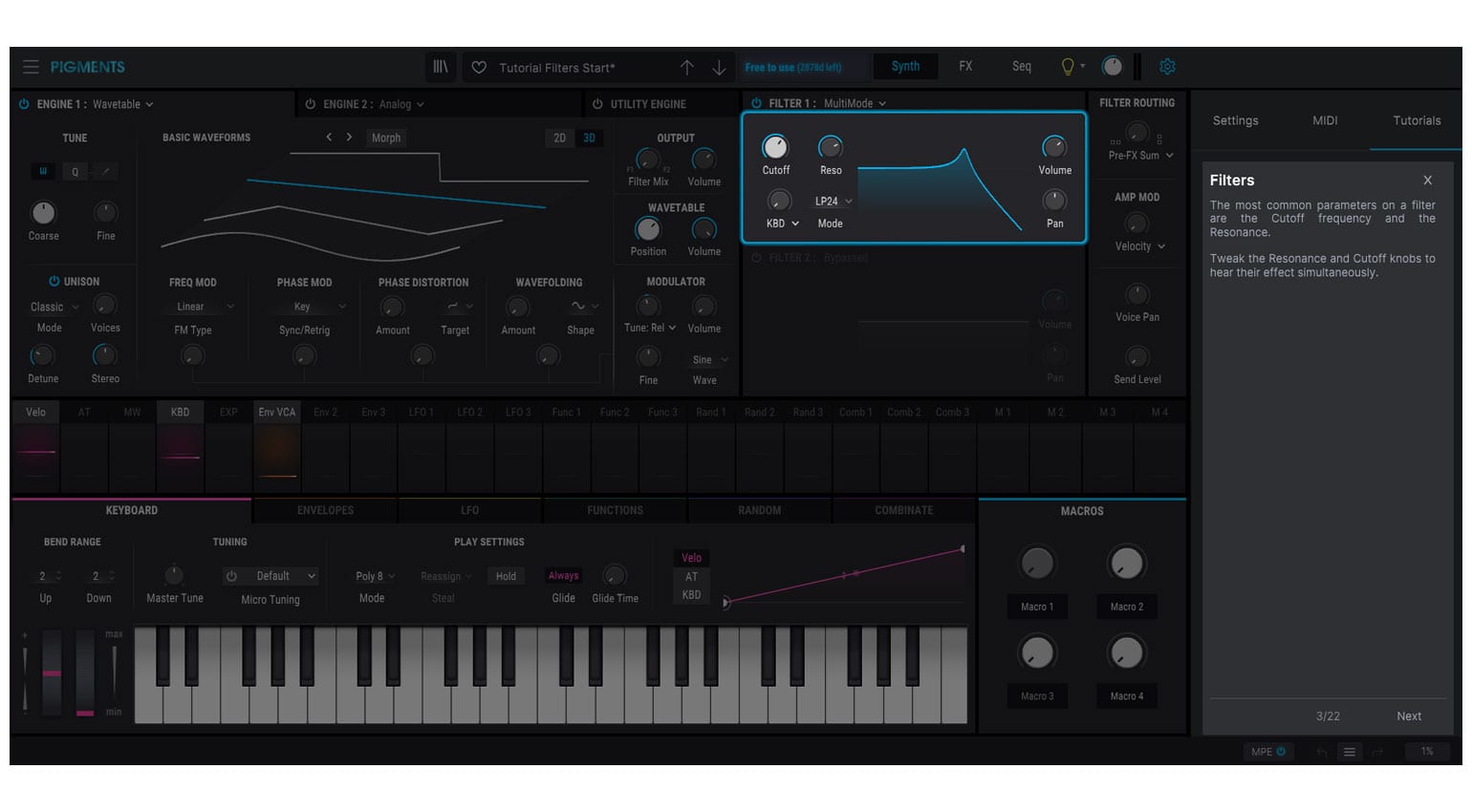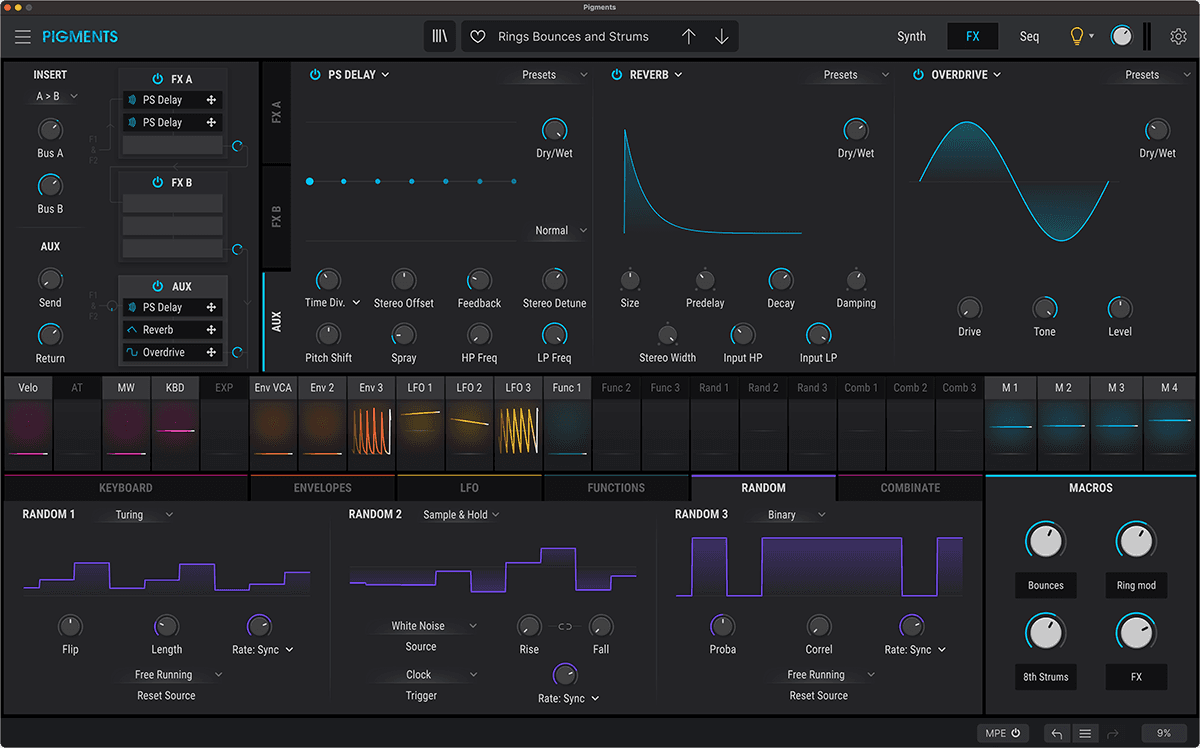

In the “Default” preset, only ENGINE 1 will be turned on.

Furthermore, the plugin lets you merge these into your own cohesive sound by offering two synthesis engines, labeled ENGINE 1 and ENGINE 2 (the new UTILITY engine also provides even more support and versatility here, offering a sub-oscillator and up to two noise sample layers). Pigments 3 gives you access to a wide variety of approaches to synthesis, spanning Analog, Wavetable, Sample, and Harmonic engines. This tab is where you’ll be doing what often lies at the core of sound design: synthesis. Let’s take a look at each in more detail. To design a sound from scratch (or to edit a more complex preset), there are three main tabs that you’ll need to be aware of: Synth, FX, and Seq. This preset starts you off with the simplest of all sounds-a sine wave. If you want to get a clear understanding of what each parameter is doing, the “Default” preset might be a good starting point, which you can find by going to ALL TYPES → Template → Default. However, if you’re looking to understand the nuts-and-bolts of the synth, these presets might feel a little overwhelming at first, since many of them feature a ton of complex settings and moving parts. If you don’t have much interest in sound design, Pigments 3 features a wide selection of expertly-crafted presets that you can rely on to instantly get some great sounds. In this article, we highlight some of the most notable features in this latest iteration of Pigments, and overview some of the other essential components you’ll want to be aware of to get the most out of the synth. While many may know them for their software emulations of analog instruments, the capabilities of their original synthesizer Pigments 3 cannot be understated either. Arturia is a digital audio software company that develops top-notch music software and hardware for musicians at all levels.


 0 kommentar(er)
0 kommentar(er)
